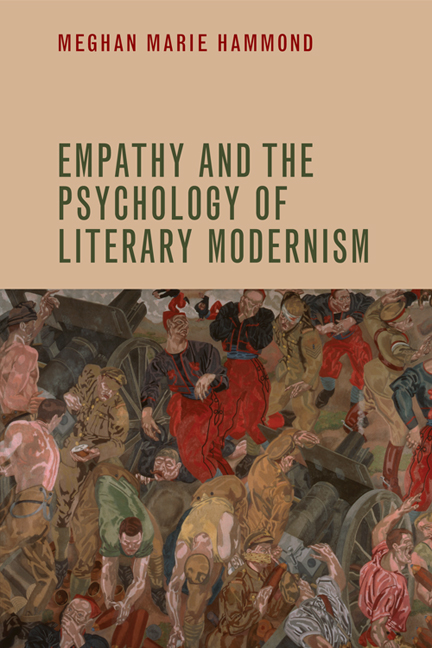Book contents
- Frontmatter
- Contents
- Acknowledgements
- Abbreviations
- Introduction: The Problem of Other Minds and the Fin de Siècle World
- 1 Into Other Minds: William and Henry James
- 2 Dorothy Richardson's Modernist Innovation
- 3 Communities of Feeling in Katherine Mansfield's Fiction
- 4 Empathy and Violence in the Works of Ford Madox Ford
- 5 Virginia Woolf and the Limits of Empathy
- Coda: New Structures of Fellow Feeling
- Bibliography
- Index
2 - Dorothy Richardson's Modernist Innovation
Published online by Cambridge University Press: 05 August 2016
- Frontmatter
- Contents
- Acknowledgements
- Abbreviations
- Introduction: The Problem of Other Minds and the Fin de Siècle World
- 1 Into Other Minds: William and Henry James
- 2 Dorothy Richardson's Modernist Innovation
- 3 Communities of Feeling in Katherine Mansfield's Fiction
- 4 Empathy and Violence in the Works of Ford Madox Ford
- 5 Virginia Woolf and the Limits of Empathy
- Coda: New Structures of Fellow Feeling
- Bibliography
- Index
Summary
In the previous chapter, I examined the lasting bonds that tie Henry James's fiction to the psychological theories of his brother William James and E. B. Titchener. During James's childhood years, the discipline of psychology was still an embryonic ‘nameless force’ (H. James 1913b: 194). In this chapter, I examine the works of Dorothy Richardson. Born thirty years after James, Richardson grew up at a time when ‘psychology’ was a name widely spoken. By the time Richardson was an adolescent in the 1880s, the new science, dominated by Wilhelm Wundt in Germany, Théodule-Armand Ribot in France and William James in the United States, was being introduced to some secondary-school students in England, including Richardson. As a young woman, she had the opportunity to take ‘a class for the study of logic and psychology, newly introduced to the sixth form curriculum’ (Richardson 1943: 135). Years later, she remembered those logic lessons with great fondness, but reported that psychology, ‘with its confidence and its amazing claims, aroused, from the first, uneasy scepticism’ (ibid.: 136). Despite her distrust, or perhaps because of it, Richardson went on to make a monumental contribution to modernist psychological thought. Her minute study of Miriam Henderson's inner life, played out over the thirteen volumes of Pilgrimage (published starting in 1915), at once reflects and challenges her era's understanding of how the conscious mind interacts with the world.
Scholarship on Richardson's work has seen a gratifying surge in recent years, solidifying her place in the modernist canon and broadening our understanding of her contributions to literary and intellectual history. But such scholarship has yet to reckon with many of the connections between Pilgrimage and the turn-of-the-century sciences of the mind that informed the lives of both Richardson and her protagonist. We learn early in Pilgrimage that Miriam, like her creator, studied at her progressive late nineteenth-century school ‘the beginning of psychology – that strange, new subject’ (PR 79). Critics such as Mary Loeffelholz have noted that Richardson's ‘rendition of mental process in many respects parallels the contemporary ideas of Freudian psychoanalysis, which were making their way into British intellectual life during the years Richardson worked on Pilgrimage’ (Loeffelholz 1992: 60).
- Type
- Chapter
- Information
- Empathy and the Psychology of Literary Modernism , pp. 60 - 89Publisher: Edinburgh University PressPrint publication year: 2014



